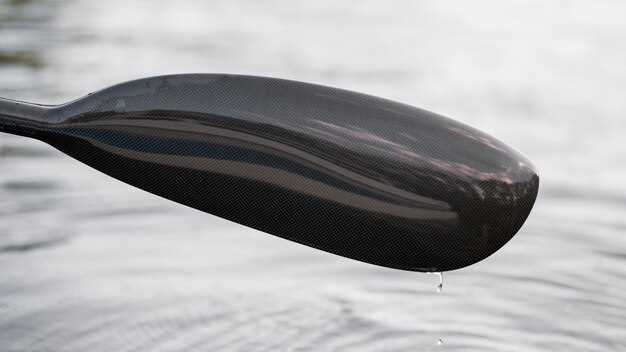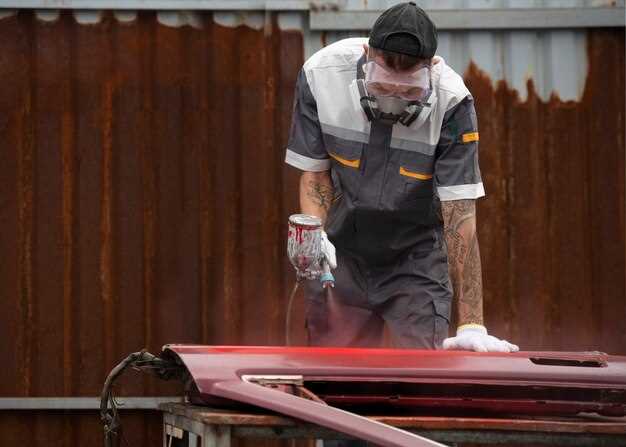
When it comes to maintaining the aesthetic appeal of your boat, the gelcoat plays a crucial role. Over time, exposure to harsh environmental elements can lead to fading, making your vessel lose its original shine. Restoring the gelcoat not only enhances the appearance of your boat but also protects it from further damage. In this guide, we will explore professional techniques and tools that can effectively revive your boat’s gelcoat and bring back its luster.
Whether you’re a seasoned sailor or a boating enthusiast, understanding the importance of gelcoat restoration is vital. A well-maintained gelcoat acts as a barrier against UV rays, saltwater, and other corrosive materials, safeguarding the integrity of your boat’s surface. By following the right procedures and utilizing the correct products, you can achieve a showroom finish that not only adds shine but also prolongs the life of your investment.
Join us as we delve into the processes involved in restoring faded boat gelcoat. From assessing the level of fading to selecting appropriate polishing compounds, our comprehensive guide will provide you with the knowledge needed to ensure a professional-grade restoration. Your boat deserves to shine, and with the right approach, you can achieve remarkable results that will turn heads on the water.
Identifying Signs of Faded Gelcoat and Assessing Damage
Recognizing the signs of faded gelcoat is essential for maintaining the appearance and longevity of your boat. The primary indicators of fading include a loss of shine and a dull, chalky texture. When gelcoat starts to fade, it often loses its ability to reflect light, giving your boat a less polished look.
Another common sign is the presence of color mottling, where the gelcoat appears unevenly discolored. This can occur due to prolonged exposure to UV rays, saltwater, and other environmental factors. To assess the extent of damage, closely inspect the surface under bright light. Look for areas that are significantly lighter or darker than the original gelcoat color.
In addition to visual cues, physical signs such as cracks, chips, or spider webbing can indicate deeper issues. If the surface feels rough or has lost its smooth finish, it may require more intensive restoration efforts. Performing a water bead test can also help determine the condition; if water does not bead up and instead spreads out, the gelcoat’s protective qualities may have diminished.
By accurately identifying these signs early on, you can take appropriate measures to restore the shine and integrity of the gelcoat, ensuring your boat remains in optimal condition.
Step-by-Step Process for Buffing and Polishing Gelcoat

Buffing and polishing gelcoat is essential for restoring the shine and protection of your boat’s surface. Follow these steps for a professional finish.
Step 1: Gather Your Materials – Before you start, collect all necessary materials. You will need a dual-action polisher, polishing pads, marine-grade polishing compound, microfiber cloths, and a bucket of water with soap for cleaning.
Step 2: Prepare the Boat Surface – Clean the gelcoat thoroughly using a mild soap solution. Rinse well and dry the surface to remove any dirt, grime, or debris that can cause scratches during the buffing process.
Step 3: Assess the Damage – Inspect the gelcoat for any scratches, oxidation, or faded areas. Take note of particularly damaged spots that may require more attention during buffing.
Step 4: Choose the Right Polishing Pad – Select an appropriate polishing pad based on the condition of your gelcoat. A medium-cut pad works well for oxidized surfaces, while a fine-cut pad is suitable for final polishing.
Step 5: Apply the Polishing Compound – Apply a small amount of marine-grade polishing compound onto the pad or directly onto the gelcoat. Keep the amount manageable to ensure even distribution without creating a mess.
Step 6: Buff the Gelcoat – Turn on the dual-action polisher at a low speed to avoid splattering. Gently work the pad over the gelcoat in overlapping strokes. Gradually increase the speed as you become comfortable, but keep the pad moving to prevent heat buildup.
Step 7: Check Your Progress – Periodically stop buffing to wipe away the polishing compound with a microfiber cloth. Inspect the sheen of the gelcoat. If it’s not to your satisfaction, continue buffing until achieving the desired result.
Step 8: Final Polishing – Once the gelcoat is restored to your liking, switch to a finer polishing pad and a polishing compound designed for finishing. Repeat the buffing process to enhance the shine and clarity.
Step 9: Clean Up – After polishing, clean the pad and your tools with water and soap. Store them in a dry place to maintain their condition for future use.
Step 10: Wax the Gelcoat – To protect the freshly polished gelcoat, apply a high-quality marine wax. This will add a layer of protection against UV rays and prevent future fading.
Following these steps will ensure that your boat’s gelcoat remains vibrant and protected, extending its lifespan and enhancing its appearance.
Choosing the Right Products for Gelcoat Restoration and Maintenance

When it comes to restoring and maintaining boat gelcoat, selecting the right products is crucial for achieving a lasting shine and protection. Various types of products are available, each designed for specific functions in the restoration process.
Begin with a quality cleaner specifically formulated for gelcoat surfaces. These cleaners effectively remove oxidation, grime, and marine stains without damaging the underlying material. Look for biodegradable options to ensure environmental safety while maintaining your boat’s aesthetics.
Next, polish is an essential product for bringing back the shine of faded gelcoat. Choose a polish that contains micro-abrasives, as these will help in smoothing out imperfections while enhancing gloss. Additionally, a polymer-based polish provides a protective layer that helps guard against UV damage and fading.
After polishing, apply a high-quality marine wax to seal in the shine. Marine waxes are designed to withstand harsh marine conditions, providing a durable barrier against saltwater, sun exposure, and dirt. Opt for products that provide long-lasting protection and are easy to apply for optimal results.
Don’t overlook the importance of a maintenance product. A gelcoat conditioner can be used regularly to help maintain the luster and extend the life of the shine achieved during the restoration process. These conditioners often contain UV inhibitors and lubricants, which help to preserve the gelcoat’s integrity over time.
Always read and follow manufacturer instructions for each product, and conduct a patch test when trying new formulations. By choosing the right products, you can restore your boat’s gelcoat to its former glory and keep it looking magnificent for years to come.



